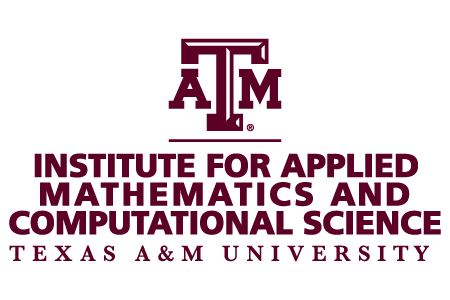May 30-31, 2011 Towards Automated NMR Protein Structure Determination Xin Gao ( KAUST) Abstract Protein three-dimensional structure determination is the key towards the understanding of the function of the human body. Nuclear Magnetic Resonance (NMR) is one of the two main methods for protein structure determination. Currently it takes weeks to months of human labor to determine a protein structure after the NMR experiments. If we...
Modeling and Simulation of Wave Propagation and Applications
May 8 – 9, 2012 Abstract: Robust and accurate simulations of wave propagation in complex media are essential for many important industrial applications ranging from seismic imaging to medical tomography. Challenges in this area include developing robust discretization techniques that are accurate, less sensitive to wave number, and are scalable on state-of-the-art computer architectures. The focus areas of this workshop are: –...
Computational Biomedicine and Geophysics Workshop
April 5-6, 2012 Modeling Initiation and Growth of an Atherosclerotic Lesion Jay R. Walton (Texas A&M University) Abstract Atherogenesis, or the initial phase in the development of an atherosclerotic lesion, is viewed as an inflammatory instability driven by oxidative modification of low density lipoproteins fueled by reactive oxygen species occurring as a byproduct of normal metabolic processes in the wall of muscular arteries....
Ecosystem Modeling, Simulation and Assessment Workshop
September 9-10, 2011 Water Quality: The Importance of Multispecies Numerical Modeling of Plankton Environments Dan Roelke (Texas A&M University) Abstract Water quality is portrayed in many ways. These commonly include characterizations of biodiversity, harmful algal blooms, and hypoxia. Less common are characterizations of the underwater light field, or the spectral quality of light, which is essential for the health of ecosystems in...
Workshop on Statistical Inverse Problems
May 20-21, 2011 Guilt by Association: Finding Cosmic Ray Sources David Ruppert (Cornell University) Abstract The Earth is continuously showered by cosmic rays, atomic nuclei moving with velocities close to that of light. In 2008 the most sensitive cosmic ray detector to date, the Pierre Auger Observatory (PAO), began operation. Roughly 70 Ultra High Energy Cosmic Rays (UHECRs) have been detected by PAO. Each is approximately ten million...
Workshop: Large-Scale Inverse Problems and Uncertainty Quantification
February 24-25, 2011 The Use of Ensemble Methods for History Matching Geir Evensen (Statoil Research Centre) Abstract This paper compares two ensemble-based data-assimilation methods when solving the history-matching problem in reservoir-simulation models. The methods are the Ensemble Kalman Filter (EnKF) and the Ensemble Smoother (ES). EnKF has been extensively studied in petroleum applications while ES is now used for the first time for...

